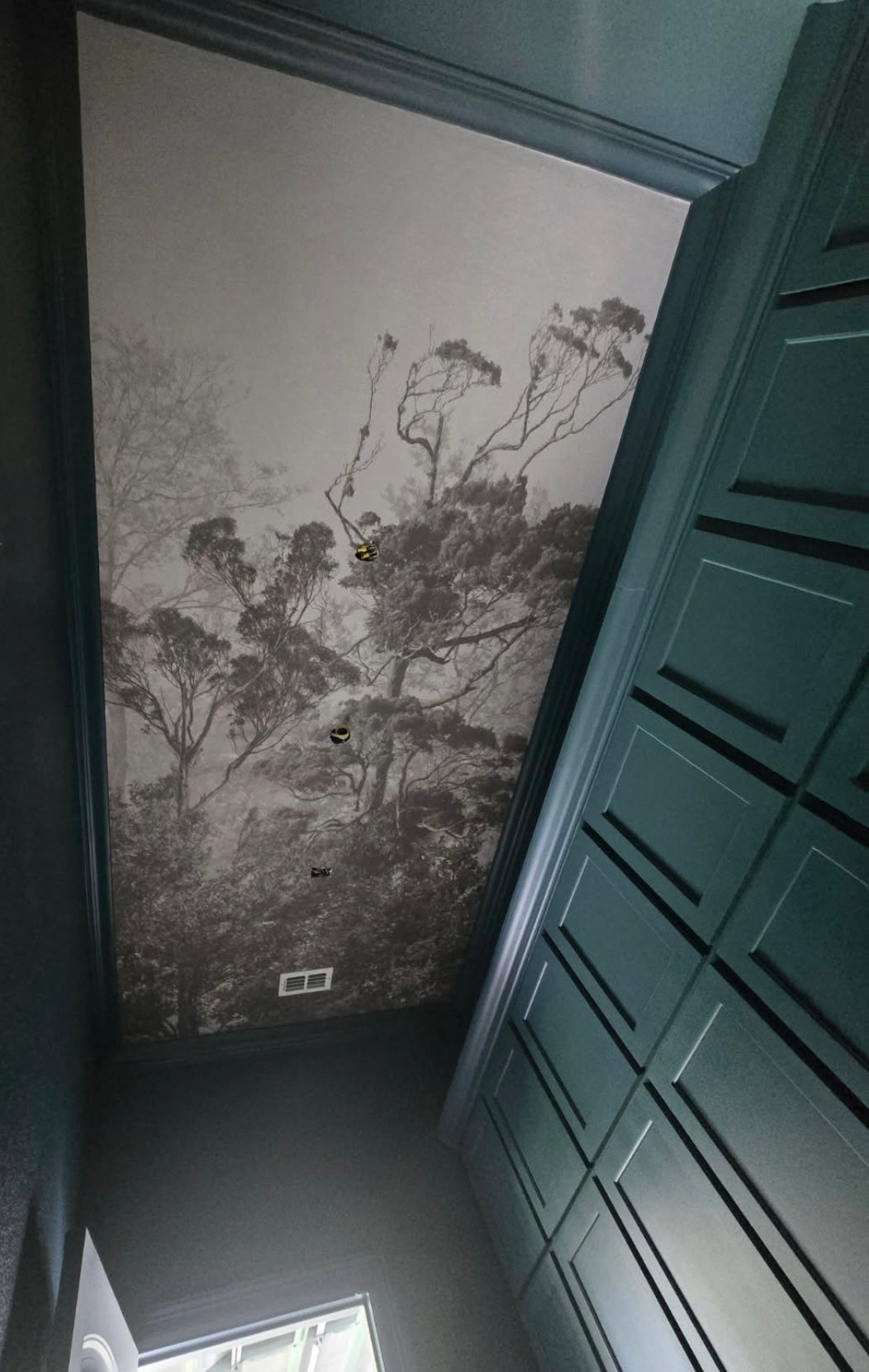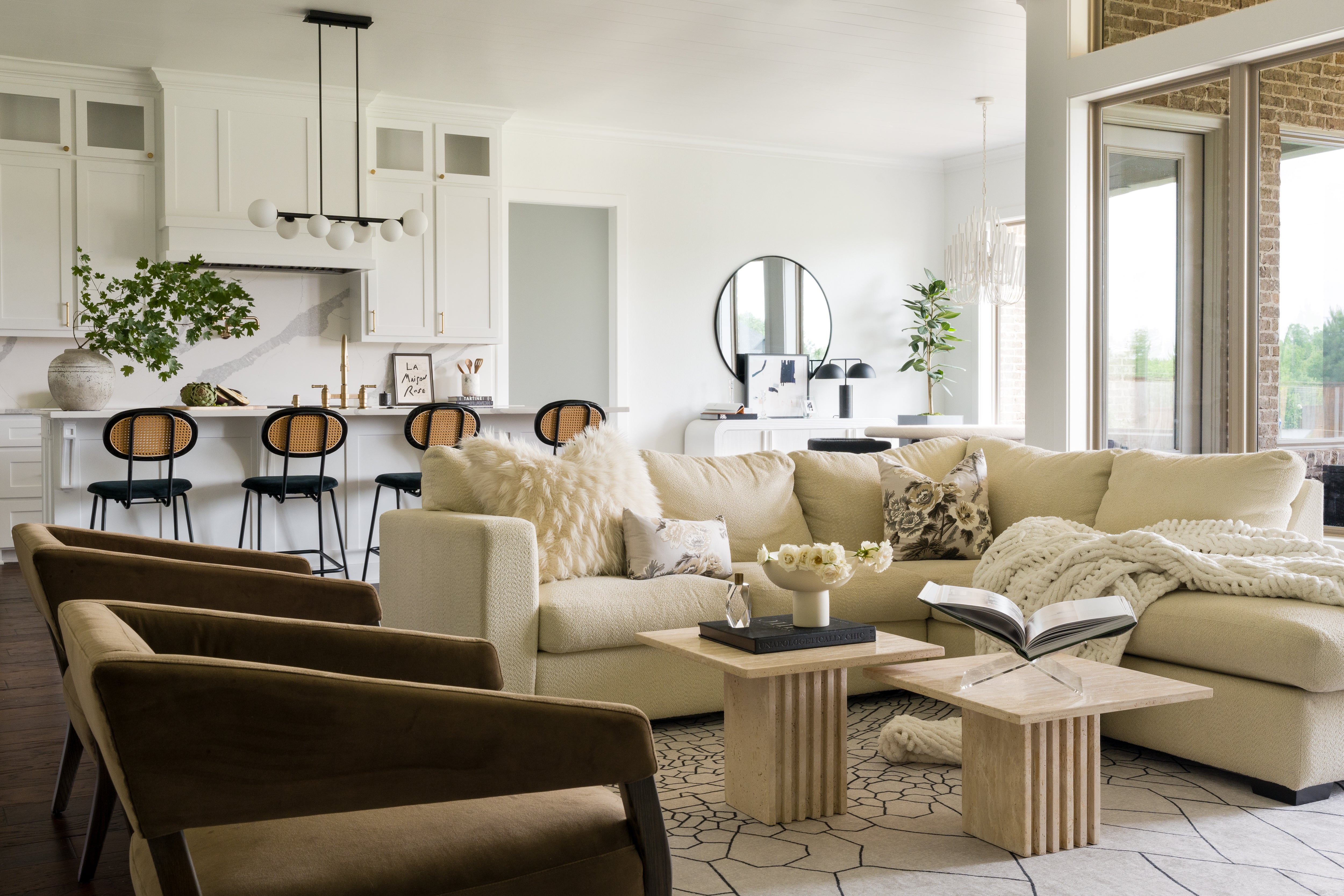When you’re planning your home design, a huge focus should be to make sure that you are creating a flow and maintaining cohesion, throughout your home. Trust me when I say that that’s the easiest way to elevate your space and to make your home feel more luxurious! So, check out all the best home and interior design ideas for your space here to ensure that you’re creating a cohesive flow, direct from an East Texas interior designer.

The Best Home and Interior Design Ideas for a Cohesive Space
As an East Texas interior designer, I know a thing or two about creating a cohesive home. In every project, I follow five simple steps: I choose 2-3 main colors, I mix interior design styles that feel like you, I consider lighting, I use art, and I create thoughtful transitions. And every single time, it creates a beautiful, elevated space. Get the breakdown of each step, and added bonus tips, below!
Step 1: Choosing Wall Colors
What’s really going to lay the foundation for your interior design style? Your wall colors. Color is one of the most powerful tools we have in design, and will really set the tone for how your home feels.
This doesn’t mean you have to have the same neutral wall color throughout your home, it just means that you should stick with a consistent color palette. Think about how the shades all complement one another when you’re choosing paint colors.

Steps for Choosing the Best Paint Colors
-
Choose 2-3 main colors. This might look like a soft neutral, a bold hue, and an accent color. This will be your overall vibe color-wise.
-
Use these colors in different ways throughout the home. Get creative! This could look like a navy color drenched room in one room and then a navy throw pillow or piece of art in another room, creating that consistency.
-
Carry at least one metal throughout your home design. Some of my personal favorites include polished nickel, and antique brass.
My Favorite Paint Colors
If you want to check out all of my favorite wall colors, I have a whole blog just on my most-used Sherwin Williams colors. But I’ll list a few of my favorites here, for the purposes of your home and interior design ideas:

Step 2: Mix (Don’t Match) Your Interior Design Styles
I’m a big believer in mixing styles, because homes that stick to one “theme” can easily feel stiff or over-designed. Say you love mid-century modern lines AND vintage French details. That’s okay! In fact, it’s even better, because it gives you the opportunity to make your home yours while elevating it with unique accents.
The trick is to have one main “anchor” style, and then layer in a second (and sometimes even a third!) style as an accent. Some of my favorite examples of this are:
-
A modern sofa paired with a traditional antique coffee table
-
A minimalist dining room with vintage art and sculptural lighting
-
A coastal-inspired bedroom with a rustic wood dresser and clean-lined nightstands
So, keep in mind that interior design styles can absolutely be mixed and still feel intentional. Mixing adds depth and contrast to any home design, all while making your home feel more like you!

Step 3: Think About Lighting and Scale
Lighting is one of the most overlooked parts of cohesion. The style of your light fixtures matters, and can really be the key to creating the atmosphere you’re going for.
Try to:
-
Keep finishes consistent (if you’re using brass, stick to warm tones throughout)
-
Repeat similar shapes or materials across rooms. Think rattan pendants in the kitchen and woven sconces in the hallway.
-
Think about scale! don't use tiny lamps in a large room. I usually always try to go larger with my lights. If you have tall ceilings really optimize those tall ceilings and do large fixtures.
Lighting can truly help tell the story of your home, so don’t let it go unnoticed in your interior design!

Step 4: Use Art to Tell a Story
Art is one of my favorite tools for tying a home together. It doesn't all need to match, but it should feel curated. Whether you're into abstract, landscapes, photography, or quirky vintage pieces, there’s a way to make them all work together.
Tips:
-
Stick to a consistent frame color and material
-
Don’t be afraid to play with scale! Think large pieces in some rooms, gallery walls in others. Each style will complement a room differently
-
Repeat color themes in the artwork across rooms, even if the subject matter varies. Not every art piece has to match the color scale but maybe repeat a color from one piece into another, just to help it flow.
Bonus tip: Art doesn’t have to be expensive. You can mix original pieces with prints, textiles, or even sculptural wall objects. See my guide to picking out the best art prints and shop some of my favorite ones here.

Step 5: Build Transitions In-Between Spaces
As an East Texas interior designer, this is something I do with every home I design. Look at how your spaces connect. What’s the view from your living room into your kitchen? From the hallway into the guest room?
Use rugs, furniture placement, and subtle color shifts to create smooth transitions. Sometimes I’ll use the same rug in two different sizes in adjacent rooms, or echo a pattern in the drapes of one room and the pillows in another. The goal is for your eye to move naturally from space to space without jarring contrasts.

Final Thoughts to Create a Cohesive Home
I absolutely get it, it’s tempting to design one room at a time so you can be done and move on to the next one. But that’s exactly where you’ll slip through the cracks and design a home that just feels disconnected, so you want to avoid doing that in your interior design. Even if you decorate slowly (which is totally normal!), work off a whole home vision. Nail down a mood board, a color palette, or just a few words that define your vibe: Modern California casual, warm and moody, bright and eclectic, etc.

Brittney Lane | Longview, TX Interior Designer
I hope these home and interior design ideas helped you nail down your vision for a cohesive home. If you’re feeling stuck on the best interior design styles to incorporate in your home, check out my blog post on the overviews of the main ones here. If you’re ready to team up with an interior designer who has experience in creating cohesive homes, click here to book a consultation today!
Read more

There’s an art to styling a bookshelf in a way that it feels both curated and effortless. Over the years as an East Texas interior designer, I’ve developed my own approach that blends design princi...

Color drenching is having a moment in interior design, and for good reason. It’s a great way to make your home bold and elevated, creating an immersive experience for you and your guests. As an Eas...

